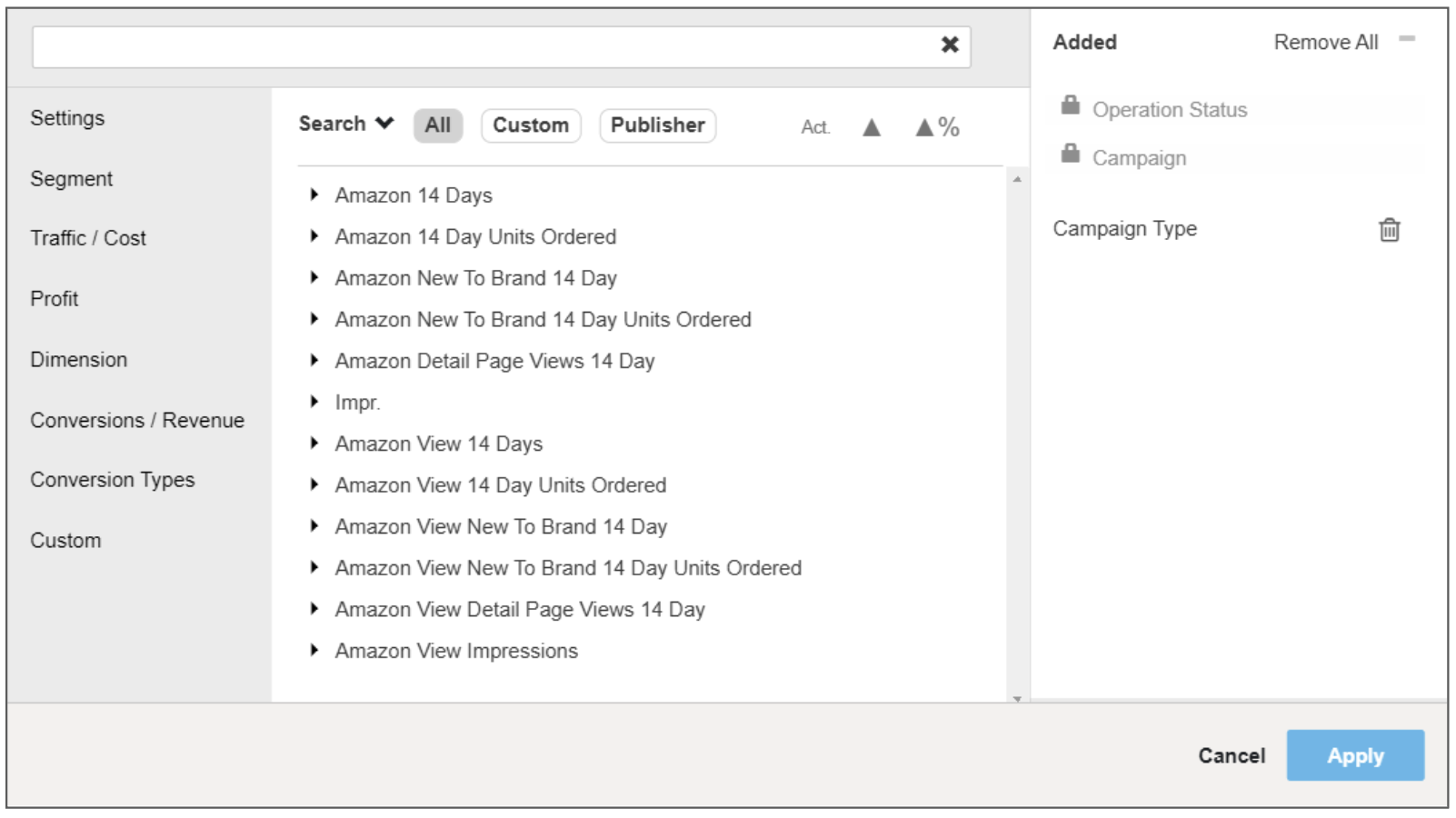What's The Difference Between Amazon CPC And vCPM Cost Models?
It’s important to measure your digital marketing metrics, including comparing CPC vs. vCPM (cost per thousand viewable impressions). CPC is based on the number of actual clicks the ad receives, while vCPM is based on the number of times an ad is viewed, regardless of whether shoppers click on it or not.
Note: Sponsored Display vCPM adheres to the MRC definition for an ad view: at least 50% of the ad should have been in the shopper’s viewport for at least one second for it to be registered as a viewed impression.
We'll list some definitions below:
CPC = Total Spend / Total Clicks
vCPM = Total Spend / ((Total impressions * % in-view) / 1000)
vCPM is often used for advertisers focused on brand awareness or delivering a specific message, because this pricing model is more focused on exposure as opposed to a cost-per-click model.
In Marin, you can use both metrics and consider the implications of each for a more comprehensive view of campaign performance. This information will help you better understand the impact of your Sponsored Display campaigns, regardless of whether you're using click-based (CPC) or view-based (vCPM) attribution.
How Does Amazon’s vCPM Cost Model Work?
Conversions and Revenue for Sponsored Display vCPM campaigns are an ESTIMATED value that is attributed to both viewable impressions and clicks (because the cost type is based on viewable impressions - vCPM). To put it simply, alongside the actual Conversions and Revenue generated via the vCPM campaign, Amazon is also including estimated Conversions and Revenue when someone views your Sponsored Display Ad but does not click on it.
It's also worth noting that the vCPM Conversions and Revenue are attributed to your brand sales and not the products in the campaign. For example, if you run an Advertised Product Report from Amazon, you'll notice that the orders and sales do not match what is being displayed in Amazon's UI at the campaign level. You can see a screenshot below from a Sponsored Display Advertised Product Report:

- The 14 Day Total Orders (#) and 14 Day Total Sales columns reflect the Cost Type of a campaign.
- The 14-Day Total Orders (#) - (Click) and 14-Day Total Sales - (Click) columns are based on click attribution (CPC Cost Type), regardless of whether your campaign cost type is set to CPC or vCPM.
- Campaign A has parity across all four columns because its campaign Cost Type is set to CPC.
- Campaigns B through M, unlike Campaign A, differ because their campaign Cost Types are set to vCPM. The (Click) columns are your actual Orders and Sales, whereas your non-click columns are a combination of actual Orders and Revenue as well as Amazon’s estimated Orders and Revenue based on your ad being ‘viewed’.
Example
Campaign C generated 8 orders with a total revenue of £112.96. To identify the estimated view Orders and Revenue, subtract the (Click) column from the regular column.
207 14 Day Total Orders (#) - 8 14-Day Total Orders (#) - (Click) = 199 estimated ‘view’ Orders
£2,564.39 14 Day Total Sales - £112.96 14-Day Total Sales - (Click) = £2,451.43 estimated ‘view’ Sales
How Does This Impact Reporting Of Amazon Sponsored Display Campaigns In Marin?
Regardless of the cost type that you specify when creating your Sponsored Display Campaign (CPC or vCPM), Marin will report on both attribution models against that campaign.
For example, if you create a Sponsored Display campaign with vCPM as the Cost Type, Marin will show the Conversions and Revenue generated from the ad being clicked on (CPC Cost Type), alongside the estimated view Conversions and Revenue (vCPM Cost Type), and vice-versa.
In the Marin Column Selector search for conversion types that contain view to see estimated view conversion and revenue.

How Should I Bid On This Activity?
The decision is entirely up to you. In Marin, you have the option to either bid based on actual clicked Conversions and Revenue or use the estimated View Conversions or Revenue to target a CPA or ROAS goal -- regardless of the cost model you’ve chosen to set up for your Sponsored Display campaign.
If your goal is performance (CPA / ROAS) Marin’s recommendation is to optimize toward actual clicked Conversion and Revenue and not View Conversions or Revenue (even if your campaign is set to vCPM) because this is the actual performance of your Sponsored Display campaign and not an estimated number of Conversions or Revenue.
If you've used Marin's automated bidding tool to manage Strategies for other publishers, then managing bids for Amazon Advertising accounts should be pretty familiar. Marin manages keyword-level and target-level calculated bids and supports all performance Goals for your Amazon activity, including:
- Maximize Conversions to CPA
- Maximize Revenue to ROAS
Additional information about Marin’s bidding solution for Amazon can be found here.
If your goal is awareness, advertisers and registered sellers in CA, DE, FR, ES, IT, IN, JP, UAE, UK, and the US can set up an “Optimize for Viewable Impressions” strategy directly in the Amazon Ads UI to help create product awareness.
Please reach out to your Marin account representative with further questions.